How do you choose the best flexible pump connector to join a pump and pipe? In fact, why are they needed at all? Read on for a quick overview.
A flexible connector is needed because any number of pump problems can result from the excessive pump nozzle loads without one. Nozzle loads from pipe misalignment, thermal expansion, and other factors can cause seal leakage, coupling problems, bearing problems, and more. The right flexible pump connector can eliminate the problems caused by these excessive nozzle loads.
The right connector will also isolate the pump vibration, which can be destructive and magnified through the piping system.
There are four main types of flexible connectors used with pumps, and they are made from rubber, stainless steel, or Teflon. Flexicraft provides all these styles and more.
Rubber Connectors
There are two types of rubber connectors: the spherical type, and the spool type. The spherical type is the mostpopular and economical style for pumps, and it has a metal flange that can have tapped holes, making it easy to install. Spherical designs have good flow-through, and minimal turbulence and sediment build-up. See the basic Ultrasphere at
http://www.flexicraft.com/Rubber_Expansion_Joints/Ultrasphere/.
Spool type connectors have full-face rubber flanges, reinforced with metal backing rings. Spool types can be made with a wide arch to reduce stiffness, or a filled arch for a smooth bore. See the basic Ultraspool athttp://www.flexicraft.com/Rubber_Expansion_Joints/Ultraspool_Single/.
The elastomer must be carefully selected for either type. EPDM, Neoprene, butyl, and many other compounds are available. PTFE lining is also available.
These connectors can expand and contract as required, because they act as expansion joints. But control units with tie rods may be needed to prevent over extension if the system is not properly anchored. Control units must be assembled in the field, because they are bolted to the mating flanges. This will be covered in more detail in another newsletter. Factory installed control cables are an alternative to traditional control rods with the spherical style.
Advantages:
- Inexpensive and easy to install
- Excellent for isolating vibration and absorbing noise
- Good for compression from thermal growth
- Available in a variety of elastomers
- Any diameter can be accommodated
- Reducing designs available
Disadvantages
- Not recommended for high temperature applications and with certain chemicals.
Braided Hose Connectors
The flexible portion of these metal connectors is a corrugated stainless steel with a stainless steel braid, and the fittings are carbon or stainless steel. The braided connectors can not compress or extend, and therefore do not compensate for most thermal expansions. They are not expansion joints.
The most popular end fittings are carbon steel flanges and male thread ends on small diameters, but grooved ends and others are available.
No control units or tie rods are needed with these connectors, as the braiding prevents thrust loads from being transferred to nozzles and anchors.
See a collection of stocked braided connectors at http://www.flexicraft.com/Braided_Flexible_Connectors/.
Advantages:
- Good for higher temperature applications
- Lasts longer than rubber
- Never requires control units or tie rods
- Available with any type fittings
Disadvantages
- No axial compression
- Sound absorption not as good as rubber
- Does not perform well in short face-to-face application
Metal bellows connectors are expansion joints that react much the same way as rubber connectors, because they can compress. They are used in higher temperature applications where compression may be required due to thermal expansion.
Tie rods will prevent the joint from overextending, and eliminate thrust loads until the joint compresses. The tie rods are added at the factory on these connectors.
See a basic Bellows Connector at http://www.flexicraft.com/Metal_Expansion_Joints/Bellows_Connector/.
Advantages
- Handles compression caused by thermal expansion
- Excellent for high temperature applications
- Can be designed for higher pressure applications
- Ideal for applications with many chemicals, except those that are highly corrosive
Disadvantages
- Relatively stiff
- Poor lateral movement capability
- More expensive
- Poor sound and vibration dampening characteristics
PTFE Connectors
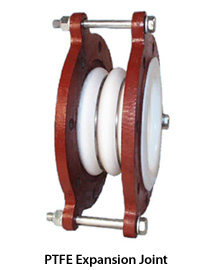 PTFE remains inert in the presence of a vast array of chemicals and so offers compatibility advantages over metal. They are usually available in two, three, or five convolution varieties, and have limitations for higher pressures. The PTFE forms a lip on the outside face of the flange so that all the wetted surfaces are PTFE.
PTFE remains inert in the presence of a vast array of chemicals and so offers compatibility advantages over metal. They are usually available in two, three, or five convolution varieties, and have limitations for higher pressures. The PTFE forms a lip on the outside face of the flange so that all the wetted surfaces are PTFE.
These connectors are expansion joints, and come with tie rods to prevent overextension and excessive thrust loads. See athttp://www.flexicraft.com/PTFE_Expansion_Joints/.
Advantages
- Ideal for corrosive chemical applications
- Often lasts longer than rubber or metal
- Good compression characteristics when thermal expansion are an issue
- Short face-to-face for a given movement
Disadvantages
- Limited pressure capacity
- More expensive than rubber
- Diameters to 12”
- Not as good in high temperatures as metal
This should start you on the proper choice for a flexible connector on your pump.
If you would like more information, visit www.flexicraft.com.

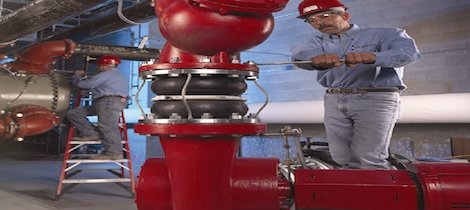
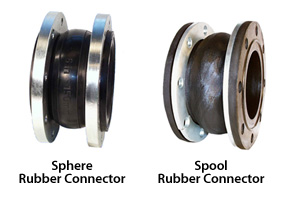
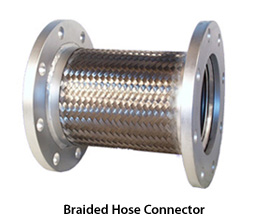
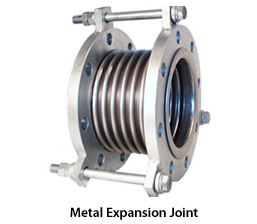



hi. special thanks for your article “Choosing a Flexible Pump Connector” but i have a problem with a rubber (NBR) flexible joint in suction and discharge of gas oil pump. these components are broken because of corrosion . which type of flexible joint you propose for this application? these pumps are applied for forwarding gas oil to turbine in power plant. please explain your idea from technical view and financial view( price comparing with NBR rubber flexible joint)
BEST REGARD